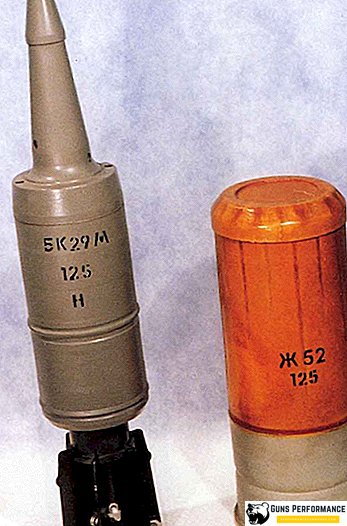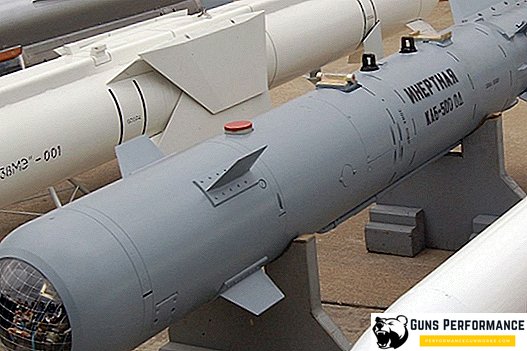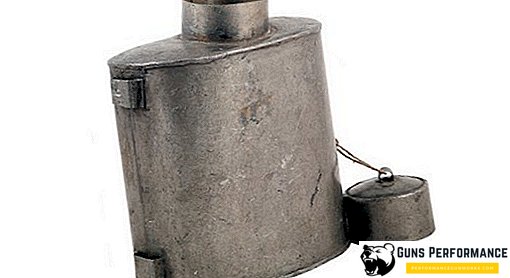The IL-14 is a short-range piston passenger aircraft. The Ilyushin Development Bureau was developed as a replacement for the outdated Li-2 passenger aircraft, as well as the Il-12.

History of creation and operation
In the summer of 1945, the OKB Ilyushin Design Bureau developed an IL-12 piston passenger aircraft. This aircraft was gradually to become the main short-haul passenger aircraft used on the territory of the USSR, and also planned to be delivered to the friendly countries of the Soviet Union destroyed by the war. Immediately began the stage of state tests of the IL-12, which he successfully passed a year later.
However, during the tests it was revealed that in the event of a single engine failure (including the critical one), the plane simply lacks traction to continue its takeoff. This created a greater likelihood of damage to the aircraft and even a plane crash if it was at the end of the runway. Thus, the IL-12 was simply not able to carry out a continued take-off (that is, a take-off that could be continued if the engine failed).
It was in this connection that, at the end of 1946, the development bureau of S. V. Ilyushin began work on the creation of a new aircraft, which, in addition to the enlarged passenger compartment and the hull, should have the possibility of continued takeoff. The project was named IL-14. Initially, the new aircraft was designed simply as an enlarged copy of the IL-12, equipped with more powerful ASH-73 engines.
However, in the course of the experiments it turned out that increasing the engine power of the aircraft would not allow us to fundamentally solve the problem of continued takeoff. Thus, with the only engine running, the aircraft balancing was changed, which required the crew to have great flight skills to maintain control. That is why it was decided to change the design of the fuselage and aircraft wing to obtain the necessary aerodynamic characteristics. As a result, the time required for the takeoff of the IL-14 was significantly reduced. Also, this was facilitated by the replacement of the ASH-73 engine with a more powerful ASH-82FN, thanks to which the aircraft quickly gained the necessary speed.
Already in 1950, the first IL-14 model was built, which had a tail plume from the IL-12 (it was changed in subsequent models). In the summer of the same year, the car made its first flight, which lasted 15 minutes. Subsequently (from the second sample), the aircraft was equipped with more powerful and reliable ASH-82T engines, receiving the designation IL-14P. The first flight of the IL-14P occurred in early October 1950.

Much work with the plane had his test pilot Vladimir Kokkinaki. They carried out a lot of work on the study of the IL-14 controllability during takeoff with one engine, as well as in critical modes, which soon became mandatory for all multi-engined airplanes.
In 1951, the testing period for the IL-14 began. Their conclusion was that the aircraft has a simpler convenient control than the IL-12, has the necessary reliability and stability, and without difficulty is able to carry out a continuous takeoff with one engine running. In 1953, by a decree of the USSR Council of Ministers, mass production of the Il-14 passenger aircraft began.
Commercial operation of the aircraft began at the end of 1954. The following year, on the IL-14, Soviet delegations visited India, Myanmar (Burma) and Afghanistan. This test, having flown a total of about 23 thousand kilometers, the aircraft passed with honor. In the 1950s, the IL-12 and IL-14 were the main aircraft on the international and domestic main airlines of the USSR. Only by the 70s, when the An-24 appeared, the IL-14 began to be used mainly on local airlines, mainly in the Far North and in Siberia.
Also with the IL-14 and the increase in its fleet is associated with the rapid growth of passenger traffic in the Soviet Union, so that they have become a luxury in an affordable way to travel. In the 1960s, the aircraft was upgraded in the direction of increasing the number of passenger seats and greater comfort. Possessing perfect at that time radio navigation equipment, the IL-14 was very easy to master the pilots of civil aviation.
The era of the aircraft ended only in the late 80s - early 90s, when the IL-14 began to be mass decommissioned. In just six years of mass production, from 1,300 to 4,000 aircraft were built (according to various sources), 70 of them were lost. The IL-14 was delivered to 31 states. These were mainly states of the socialist camp or states friendly to the USSR.

Overview of the aircraft and its characteristics
The aircraft IL-14 is a low-profile with a normal scheme. The tail plumage is single-chin. The power plant of the aircraft is represented by two piston engines, the model of which depends on the specific modification of the IL-14 and the year of manufacture. The maximum passenger capacity of the cabin IL-14 is 36 people.
Flight performance of the aircraft:
| Length m | 21.3 (Il-14P), 22.3 (starting from Il-14M) |
| Wingspan, m | 31,7 |
| Height (in the tail), m | 7,8 |
| Engines | 2 Shvetsov ASH 82T capacity of 1950 liters. with. |
| Max. speed, km / h | 430 |
| Cruising speed, km / h | 345 |
| Flight range, km | 1250 |
| Flight altitude, m | 6500 (with oxygen equipment) |
| Empty weight, kg | 12 700 |
| Maximum take-off weight, kg | 18 500 |
| Maximum number of passengers | 36 |
| Crew, pers. | May 02 |
Modifications IL-14
In the entire history of the development and operation of the aircraft was created 13 of its main modifications.
- The IL-14 is the first prototype of the aircraft, equipped with an ASH-82FN engine and tail assembly from the IL-12 and having a passenger capacity of 18 people. It was built in a single copy for testing.
- IL-14P - modification of IL-14, which was launched into serial production. Already the second built IL-14 were exactly this model. The modification is equipped with ASh-82T engines and had an increased take-off weight.
- IL-14ZOD - airborne modification of the aircraft, equipped with a ramp for landing personnel.
- IL-14G - cargo modification IL-14, which had a carrying capacity of three and a half tons.
- IL-14LL - flying laboratory, created on the basis of the IL-14. IL-14LL were used as flight research complexes, as well as ice and arctic reconnaissance aircraft.
- IL-14M - modification of IL-14P, with emphasis on further improvement of the design and efficiency. It has an elongated fuselage and increased passenger capacity (up to 24 people). Later converted to 28 and even 36 passenger seats.
- IL-14S - modification of the IL-14, equipped for transportation of top management of the Soviet Union and the party nomenclature. Equipped with a more comfortable passenger compartment and increased fuel tanks for a greater range of flight. There are also modifications IL-14PS, IL-14SI and IL-14SO, having a similar purpose.
- IL-14T - transport modification IL-14, which has an increased load capacity.
- IL-14FK - a modification designed to conduct aerial photography. Also to perform these functions there is a model IL-14FKM.

The advantages and disadvantages of IL-14
The main advantage of the IL-14 is that it for a very long time has filled the niche of the main piston aircraft, which is necessary in the civil aviation of the Soviet Union for passenger traffic on domestic routes, as well as on international flights. It is thanks to this modest worker that flights for ordinary people in the country have become as affordable a means of transportation as, for example, rail transport.
Another important advantage of the IL-14 is its reliability and unpretentiousness in operation, thanks to which it was produced in a rather large series. The benefit of using this aircraft for the state was simply enormous, and the passengers were satisfied. The reliability of the IL-14 made it possible to significantly reduce the level of accidents and disasters, which is also its strength. Powerful engines allowed the use of IL-14 from fairly short runways, which in the conditions of the Far North or Siberia was sometimes quite important. Simplicity, ease of operation of the aircraft, as well as advanced on-board electronic equipment allowed them to successfully manage even pilots with little experience.

The main disadvantage of the IL-14 was a high level of noise from piston engines, which could bring some inconvenience to passengers. However, this shortcoming did not matter much, especially in comparison with the advantages of the aircraft, thanks to which he "held out" on the airlines of the Soviet Union right up to 1989.
Conclusion
The IL-14 was an important milestone in the history of domestic civil aviation. Being one of the last piston passenger aircraft, he managed to “survive” a number of jet airliners, while continuing to be actively exploited not only on domestic, but also on foreign airlines, not to mention areas of the country with extreme conditions. Needless to say that only good cars are used and fly for a long time?












